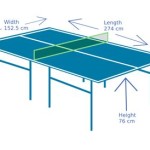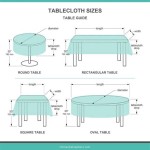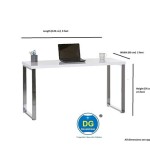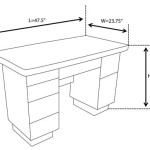Kitchen Island With Attached Table: A Functional and Stylish Culinary Hub
The kitchen island with attached table has emerged as a popular design element in modern homes, offering a harmonious blend of functionality and aesthetics. This integrated structure effectively expands workspace, provides seating, and serves as a central gathering point for family and guests. This article will explore the various benefits, design considerations, and practical applications of kitchen islands with attached tables, providing a comprehensive understanding of this versatile kitchen feature.
The core appeal of a kitchen island with an attached table lies in its ability to optimize space. Modern living often dictates a need for multi-functional areas, and this configuration adeptly addresses that need. Where a standard kitchen island provides preparation and storage space, the attached table seamlessly extends its usability to include dining, workspace, or even a casual lounging area. This integration streamlines kitchen activities and promotes a cohesive flow within the home.
Moreover, the island-table combination can be tailored to suit a wide range of kitchen sizes and design preferences. From compact eat-in kitchens to expansive gourmet spaces, the configuration can be adapted in terms of size, shape, and materials to complement the existing décor. This versatility makes it an attractive option for homeowners seeking to maximize the potential of their culinary space.
Enhanced Functionality and Versatility
The primary advantage of a kitchen island with an attached table is the enhanced functionality it offers. The combination allows for a seamless transition between food preparation and dining. One can readily move from chopping vegetables on the island countertop to serving the meal at the attached table, streamlining the entire cooking and dining process. This close proximity is particularly advantageous for families with young children, allowing parents to supervise meal preparation while keeping an eye on their children seated at the table.
Beyond dining, the attached table can serve as a multi-purpose workspace. It can function as an ideal spot for homework, crafting, or even remote work. Its proximity to the kitchen island provides easy access to utensils, appliances, and snacks, making it a convenient and productive area. The table's surface can also be used for buffet-style serving during gatherings, providing ample space for guests to help themselves to the spread.
Furthermore, the table can be designed with built-in storage solutions. Drawers, shelves, or cabinets can be incorporated beneath the table surface to store frequently used items such as placemats, napkins, or cookbooks. This added storage capacity helps to declutter the kitchen and keep essential items within easy reach. The storage options can be customized to suit individual needs and preferences, ensuring that the table remains both functional and organized.
The versatility of the attached table also extends to its seating arrangements. It can accommodate various seating options, ranging from bar stools to chairs, depending on the desired height and style. Bar stools are typically used for counter-height tables, while standard chairs are better suited for table-height surfaces. The seating arrangement can be further customized to accommodate different numbers of people, making it ideal for both small families and larger gatherings.
Design Considerations and Material Choices
When designing a kitchen island with an attached table, several key considerations must be taken into account. The first is the size and layout of the kitchen. The island and table must be appropriately scaled to fit the space without overcrowding it. Careful measurements and planning are essential to ensure that there is sufficient room for movement and access to essential appliances and work areas.
The shape of the island and table should also be carefully considered. Rectangular islands are the most common, but other shapes, such as L-shaped or curved islands, can also be effective. The shape of the table should complement the shape of the island and existing kitchen design. For instance, a rectangular island might be paired with a rectangular table, while a curved island might be better suited to a round or oval table.
Material choices play a significant role in the overall aesthetics and functionality of the island and table. The countertop material should be durable, easy to clean, and resistant to heat and stains. Popular options include granite, quartz, marble, and butcher block. The table surface should also be chosen for its durability and aesthetic appeal. Wood, laminate, and metal are common choices for table surfaces.
The materials used for the island and table should also complement the existing kitchen cabinetry and flooring. A cohesive design scheme will create a harmonious and visually appealing space. For example, if the kitchen cabinets are made of wood, the island and table could also be made of wood, or a contrasting material could be used to create visual interest. The color of the materials should also be carefully considered to ensure that they coordinate with the overall color scheme of the kitchen.
Lighting is another important consideration. Adequate lighting is essential for both food preparation and dining. Pendant lights can be hung above the island and table to provide task lighting, while recessed lighting can be used to illuminate the surrounding area. Dimmable lighting can also be used to create ambiance for dining and entertaining.
Finally, the style of the island and table should be consistent with the overall style of the kitchen. Whether the kitchen is modern, traditional, or transitional, the island and table should complement the existing décor. This can be achieved by choosing materials, colors, and finishes that are consistent with the overall style of the kitchen.
Practical Applications and Space Optimization
Beyond its functional and aesthetic benefits, the kitchen island with an attached table offers practical advantages for various lifestyle needs. In smaller homes or apartments where space is at a premium, this configuration can serve as a primary dining area, effectively eliminating the need for a separate dining room. This frees up valuable square footage that can be used for other purposes, such as a living room or home office.
In larger homes, the attached table can be used as a casual dining area for everyday meals, while the formal dining room is reserved for special occasions. This allows for a more relaxed and informal dining experience, while still providing a dedicated space for more formal gatherings. The table's proximity to the kitchen island makes it easy to serve meals and clean up afterward, simplifying the dining process.
The island-table combination can also be used to create a more social and interactive kitchen environment. The open layout allows family members and guests to participate in food preparation and dining, fostering a sense of togetherness. The table can be used for casual conversations, game nights, or even as a workspace for collaborative projects. This makes the kitchen a more inviting and engaging space for everyone.
Furthermore, the attached table can be designed with accessibility in mind. It can be built at a height that is comfortable for people of all ages and abilities, making it easier for everyone to participate in kitchen activities. The table can also be designed with ample legroom and clearance, providing comfortable seating for people with mobility issues. This ensures that the kitchen is accessible and inclusive for all members of the household.
The addition of bar stools or chairs to the attached table can also provide additional seating for guests during parties or gatherings. This eliminates the need to bring in extra chairs from other rooms, simplifying the hosting process. The seating can be easily adjusted to accommodate different numbers of people, making it a versatile and adaptable space.
In conclusion, the kitchen island with an attached table is a versatile and functional design element that offers numerous benefits for homeowners. By carefully considering design considerations, material choices, and practical applications, one can create a culinary hub that is both stylish and functional.

15 Beautiful Kitchen Island With Table Attached Home Design Lover Dining Room Combo

Kitchen Island Table Ideas And Options S
:strip_icc()/101488860-1979bbc57db843f9a636548677c66f98.jpg?strip=all)
Kitchen Island Designs We Love

36 Best Kitchen Island With Table Attached Ideas Design Remodel

Kitchen Island Perpendicular To Dining Table Design Ideas

Perfect Dining Room Table Attached To Kitchen Island 47 About Remodel Diningsets Decoration Fo Seating

15 Kitchen Island Ideas For Inspiration Feelswarm

Is Attaching A Kitchen Table To That S Lower Than The Island Good Design

Kitchen Island With Table How To Create A Functional Dining Area Contemporary Design

30 Kitchen Islands With Tables A Simple But Very Clever Combo








